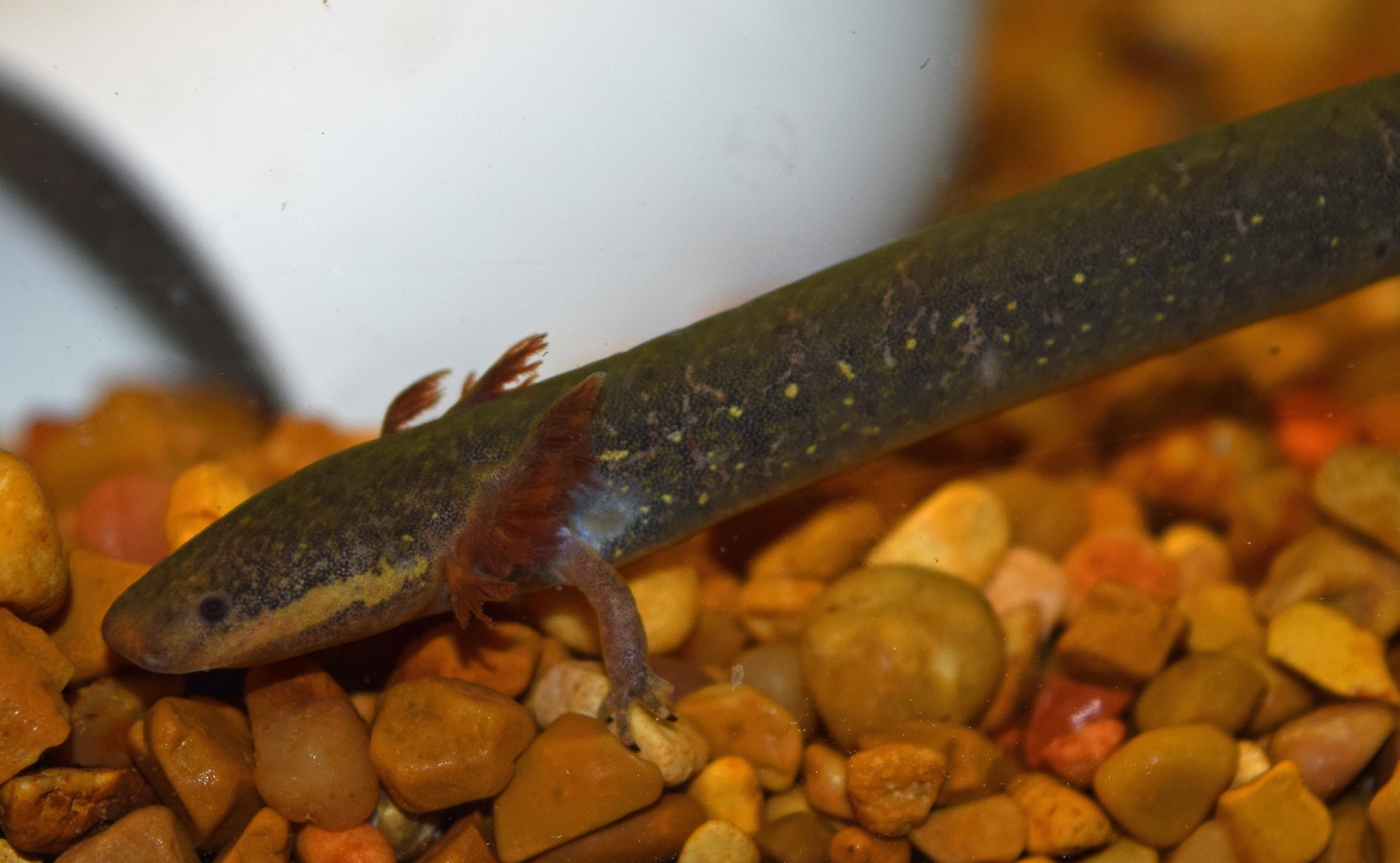Lesser siren
A species of Aquatic salamanders, Also known as Dwarf siren Scientific name : Siren intermedia Genus : Aquatic salamanders
Lesser siren, A species of Aquatic salamanders
Also known as:
Dwarf siren
Scientific name: Siren intermedia
Genus: Aquatic salamanders
Content
Description People often ask General Info
 Photo By Fredlyfish4 , used under CC-BY-SA-4.0 /Cropped and compressed from original
Photo By Fredlyfish4 , used under CC-BY-SA-4.0 /Cropped and compressed from original Description
The lesser siren (Siren intermedia) is an aquatic salamander that lives in wetlands and lakes of the United States and Mexico. This medium-sized siren is found rather abundantly in the wild and also sometimes in the pet trade. They thrive in small ponds and have the ability to burrow into mud and survive drought conditions for almost a year if necessary.
People often ask
General Info
Lifespan
12-25 years
Diet
The dietary preferences of lesser siren largely include small invertebrates, chiefly aquatic insects, annelids, and gastropods. As opportunistic feeders, they also indulge in small aquatic plants, displaying a tendency towards an omnivorous feeding behavior.
Appearance
Lesser siren is a medium-sized aquatic salamander characterized by its elongated, eel-like body and smooth, slimy, scale-less skin. Mainly dark olive or brownish-grey, their backs are often dappled with small-yellowish speckles. They are identifiable by their small, flat heads, tiny eyes, and two external gill slits, one on each side of the head. Of note are their two front legs; they lack hind limbs. Males and females appear remarkably similar with no significant distinction.
Behavior
Lesser siren is mostly nocturnal, spending the day buried in soft substrate. They are aquatic, generally found in slow-moving, shallow waters plant-rich environments. Mainly insectivorous, they consume small invertebrates utilizing a suction mechanism. Unlike many aquatic organisms, lesser siren lacks a larval stage, with juveniles resembling the adults. Being solitary, they use chemical cues to interact with individuals of their species.
Population
Stable
Scientific Classification
Phylum
Chordates Class
Amphibians Order
Salamanders Family
Sirens Genus
Aquatic salamanders Species
Lesser siren